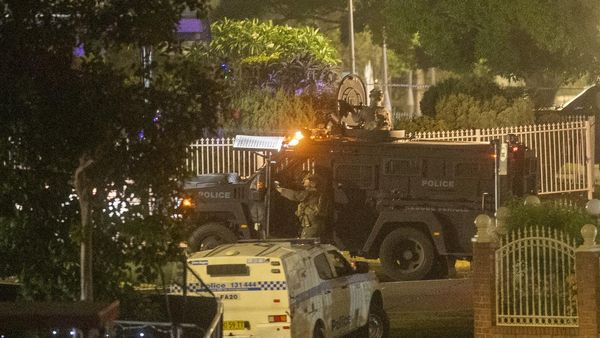
In my April 25 Barchart article, I underscored the bullish factors for the crude oil market. These factors included the ongoing conflict in the Middle East, which could potentially disrupt oil supplies, the low U.S. SPR level, and the ongoing debate over the future of traditional energy in the United States.
On April 24, nearby NYMEX WTI crude oil futures were at the $83.07 per barrel level, and the nearby Brent North Sea Crude oil futures at the $88.20 level. Prices have moved lower in May, with the two benchmarks on either side of $80 per barrel as crude oil searches for a bottom.
WTI futures decline- A trading range near the recent lows
After falling from the April 12 $86.97 high, nearby July NYMEX crude oil futures fell to a $76.15 low on May 24.

The chart shows the pattern of lower highs and lower lows, leading to the May 24 $76.15 low. However, the active month July NYMEX crude oil contract has traded in a $76.15 to $80.11 range since May 2 as the price has been consolidating with a downward bias.
Brent futures fall- Trading in a sideways pattern
Nearby July Brent crude oil futures have traded in a similar pattern over the past weeks.

The July Brent crude oil futures chart shows the decline from $91.17 on April 12 to $80.66 on May 24. Nearby Brent crude oil futures have traded in a $80.66 to $84.52 downward trending consolidation range since May 2.
Consolidation can be healthy
A sideways consolidation pattern occurs when a market searches for a concrete direction. With no clear path of least resistance, crude oil prices are stuck in neutral, which is not necessarily bullish or bearish. Extended consolidation can build reasoning for a sustained bullish or bearish breakout as the market has time to digest bullish and bearish fundamental factors that can trigger a technical move.
In late May, technical support levels for June NYMEX crude oil and July Brent futures were at $76.15 and $80.66, respectively. Technical resistance for the two crude oil benchmarks was $80.11 and $84.52, respectively. The narrow ranges suggest an eventual break to the up or downside.
Four reasons the odds favor upside instead of downside spikes
The three factors favoring a bullish technical breakout are:
- Geopolitical instability in the Middle East and Ukraine. While war can impact oil production and logistical routes, the bifurcation of the world’s nuclear powers, sanctions, and tariffs can distort oil prices. Moreover, any sudden escalation in conflicts could cause crude oil prices to spike higher.
- Crude oil transactions in non-dollar terms are causing the U.S. currency to decline as the leading reserve foreign exchange instrument. The Saudis have sold China crude oil for yuan, and other countries have bought petroleum for non-dollar currencies, which causes the dollar to slip on the world stage. A weakening U.S. currency can translate to a loss of purchasing power and higher dollar-based crude oil prices.
- The U.S. is entering the peak driving season during summer, increasing gasoline demand. Over the coming months, seasonal strength can support higher crude oil and oil product prices. Moreover, any improvement in China’s economy could cause petroleum demand to increase, putting upward pressure on prices.
- The U.S. SPR at 368.8 million barrels remains significantly below the June 2020 656 million barrel high. The low U.S. strategic reserves are not bearish for crude oil prices.
Meanwhile, the medium-term crude oil chart shows a pattern of higher lows since the 2023 bottom.

The three-year NYMEX crude oil futures chart shows mostly higher lows since the early May 2023 $63.57 low.

The three-year Brent crude oil futures chart highlights the same pattern in the Brent benchmark crude oil market.
Higher lows are often a bullish sign, but crude oil must remain above the late 2023 lows to keep the pattern intact.
Picking bottoms is dangerous; discipline and tight stops are critical
Picking tops or bottoms in any market is dangerous, as prices can rise or fall to levels that defy reasonable, rational, and logical supply and demand fundamentals. Breeching a technical support or resistance level can cause trend-following and speculative market participants to drive prices to spike highs or lows. Crude oil witnessed this irrational price action on the downside in 2020 and on the upside in 2022.
Discipline is crucial when positioning in crude oil. While I favor a long approach to crude oil at the current price levels, a break below the late 2023 lows could ignite a speculative plunge. Conversely, a rally that takes the energy commodity above the September 2023 highs could result in an explosive move to the upside.
Crude oil could be near a significant bottom, but any risk position requires careful attention to risk-reward dynamics.
On the date of publication, Andrew Hecht did not have (either directly or indirectly) positions in any of the securities mentioned in this article. All information and data in this article is solely for informational purposes. For more information please view the Barchart Disclosure Policy here.






